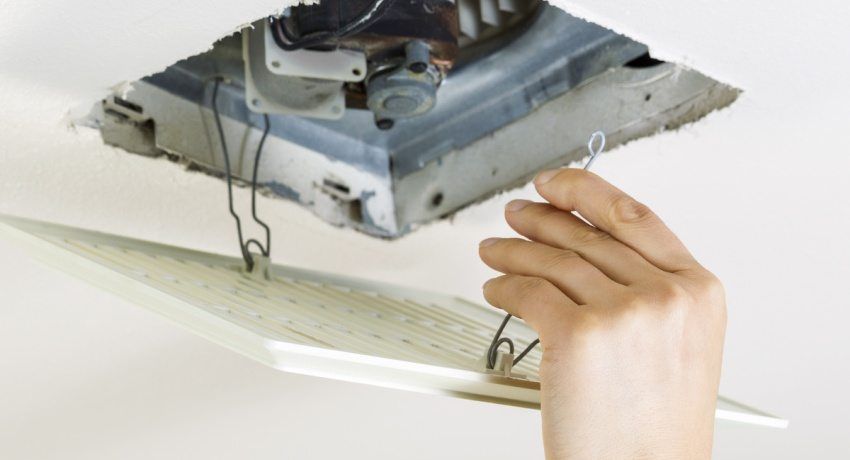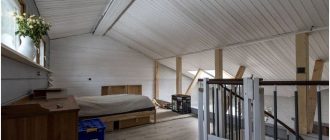From this article you can find out what are the snow retainers on the roof: the purpose and existing types of products, their characteristics and rules of use. The text contains a detailed description of corner, tubular, lattice, as well as point snow catchers and the basic rules for their installation on metal tile, soft, folded and other types of roofing.

The main types of metal profiles for holding snow on the roof
Avalanche snowfall from the roof is a common problem in regions where winters are accompanied by heavy precipitation. To solve it, special devices are used – snow holders. These constructions hold sediments on the roof, which gradually melt down drains in the process of melting.

There are several varieties of snow guard. These products are selected based on several factors:
- type of roof;
- the angle of the roof;
- snow cover typical for the region.
Consumers can buy snow catchers on the roof along with roofing material when the house is still under construction, or purchase them as additional equipment for the finished building. These devices may have a different name depending on the functions they perform.
Snow-blocking fences provide complete containment of precipitation on the roof. They are also called snow barriers. In this case, even a partial gathering of snow layers is impossible. Accumulated sediments will melt and leave the roof in a natural way.

Snow blowers perform another function. They are designed to cut the snow layer into several small pieces. Due to this, the avalanche fall energy will be minimal and safe.
Snegozaderzhateli differ not only the material of manufacture, but also the shape, size, and degree of reliability.
Consumers can buy the following types of snow guard:
- Grid.
- Corner.
- Tubular.
- Point.

In addition, you can make protective structures for the roof yourself. For this, wood is most often used.
Helpful advice! When choosing snow throwers, it is imperative to pay attention to how much snow the structure is designed to hold. Otherwise, it will not be able to fully perform its function and ensure security.
Universal tubular snow holders 3 m: price and design features
Products of tubular type are made of brackets and a pair of pipes whose diameter is 1.5-3 cm. The height of this design is 15 cm. The bracket has the form of a vertical plate in which holes are made for mounting pipes. In the lower part there is a shelf. It is used to fix the snow catcher on the roof. Screws for metal with a hex head (0,8×6 cm) are used as fasteners.
The appearance of the bracket may be different. It depends on the type of roof where it will be installed. It is desirable that between the surface of the roof and the first pipe there is a distance of about 2-3 cm, and between the pipes – 8-10 cm.

The tubular structures cut the snow layer into several pieces. They are reliable and can handle a lot of pressure. This category of products can be considered universal, since tubular snow cutters are suitable for almost any type of roof:
- sheet;
- soft;
- tiled.
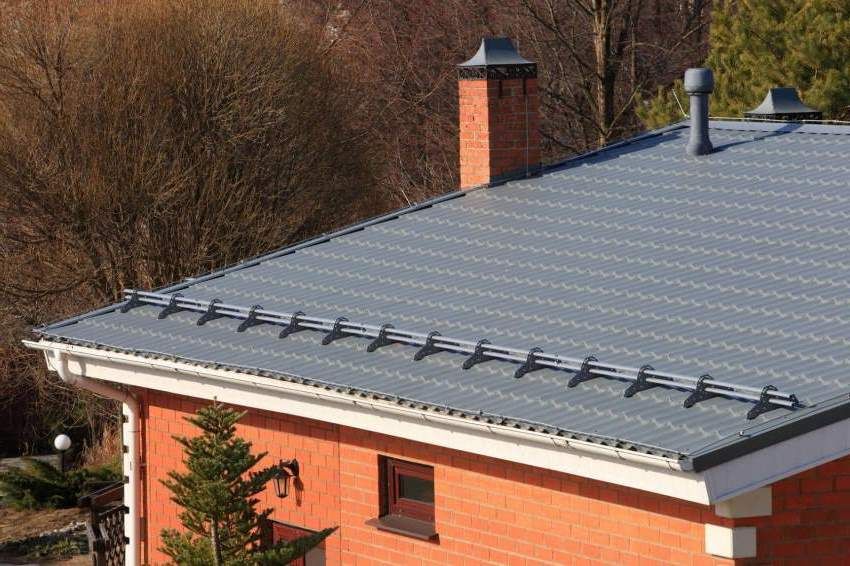
Installation of structures is carried out along the slope around the perimeter of the building. In this case, the products are not located in a row, but in a row. If the snow load in winter is large, you can install two rows of protective structures at a distance of 2-3 m from each other. Moreover, the bottom is fixed with indentation 0.4-0.5 m from the eaves overhang. The hue of the snow caps can be matched to the roofing color, therefore, after installation, these structures do not catch the eye.
For the manufacture of tubular snegozaderzhateli most often used galvanized steel. From above it is covered with paint, which is matched to the color of the roof. Due to this, the product not only fits into the general appearance of the building, but also turns out to be durable. Moreover, the paint provides protection against corrosion.
Average prices of tubular type snow stoppers:
| The brand | Collection | Price, rub. / Piece |
| Border | Economy | 980 |
| Grand line | Universal | 1350 |
| Grand line | GL-O RAL | 1765 |
Note! Tubular enclosures are suitable for roofs with a large slope (up to 60 °), where snow often moves due to high pressure. If the slope of the roof exceeds this figure, there is no need to install snow guards, since the precipitation on the surface does not linger, but immediately crumbles.
Latticed snow protectors in the universal design have the form of brackets, on which the lattice is fixed in the vertical position. All parts of the product are made of galvanized steel, exposed to the dye composition, which allows you to choose a design for any color of the roof.
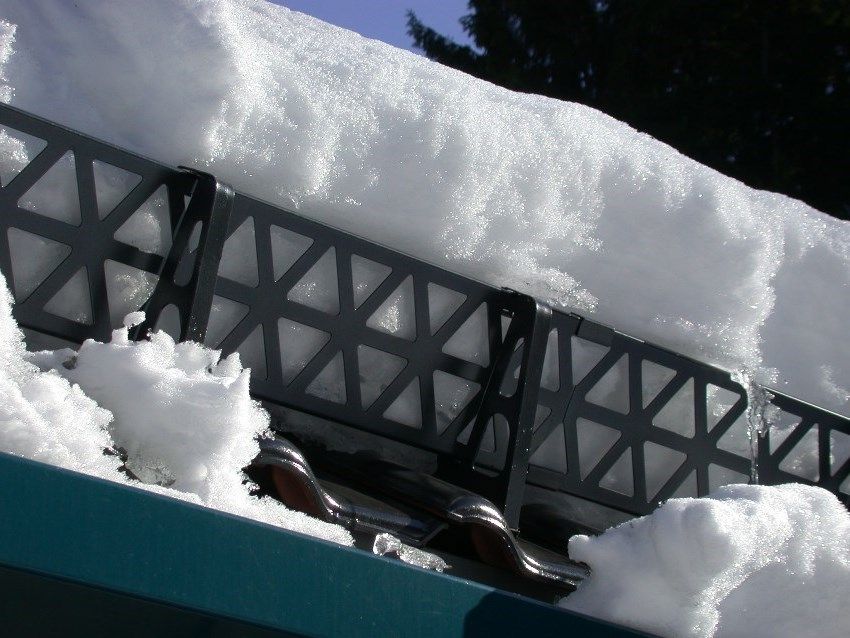
The size of the grids may vary. The largest variants have a height of about 15-20 cm. The size of small grids does not exceed 5-7 cm. The level of strength depends on the size of this part, and the ability of the structure to hold a certain amount of snow. Large steel gratings can withstand the weight and pressure of large amounts of precipitation with ice. As a rule, snow retention on the roof is provided constantly. Precipitation leaves it only in the form of melt water.
Products of lattice type are mounted on long slopes of roofs with a large slope. The presence of such a design ensures that the blocks of snow will not fall on the head of passersby. The effectiveness of the grid depends on its height. With regard to the material of the roof there are no restrictions, since all types of fasteners are provided for this type of protective structures.
Sales can be found snegozaderzhateli, where the grille is welded to the longitudinal pipes. This configuration allows to increase the reliability of the product. Installation of lattice structures is carried out on the ramp along the eaves. If the snow load in the region is large enough, as an addition, you can install other types of protective fences, for example, snowmobiles. The same applies to cases where the length of the slope exceeds 5.5 m.
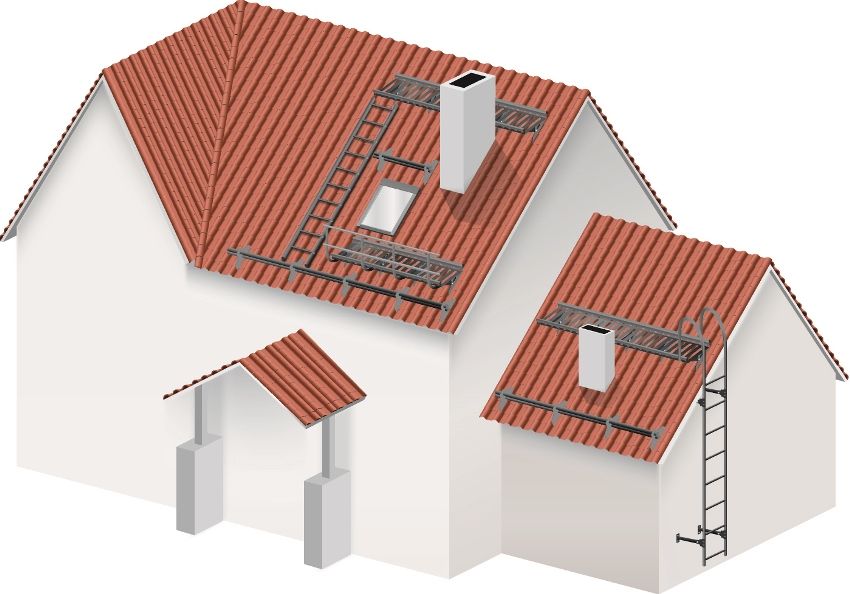
The average price of lattice structures for natural tiles (ceramic or cement-sand) is 4250 rubles / piece. Purchase of products intended for folding roof will cost about 3200 rubles per item.
Note! Under the pressure of a large amount of snow, lattices can bend. In terms of this aspect, tubular structures are more reliable. The strength of the sieve snow retainers depends on the shape of the guides or brackets, as well as their quality. Do not buy products where these parts are the same thickness as the grille.
If a small amount of precipitation accumulates on the roof, you can limit yourself to buying corner snegozaderzhateley. Most often they are used on the roof of corrugated or metal, because these products are made of similar material and in the same colors.
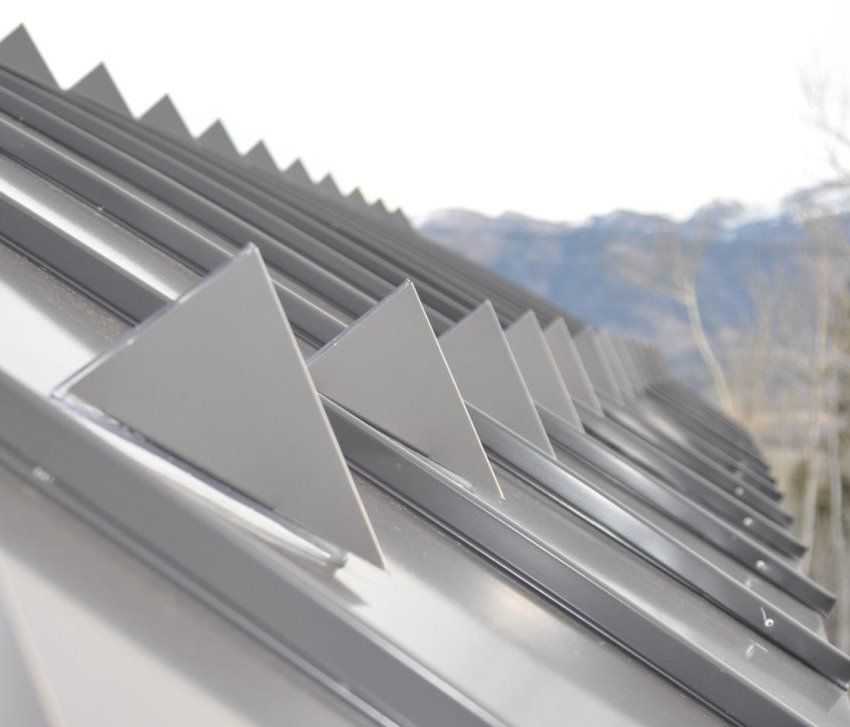
Corner metal structures have a bent triangular shape with two faces, equipped with shelves for fasteners. The height of snow clamps of this type is 4-6 cm. Corner barriers are designed for roofs with a slight slope (not more than 30?), Because the structures are not able to withstand high pressure.
Products are attached directly to the roofing material, is not an exception and the upper wave of the coating, where fences are also fixed. Installation of snow clamps on the roof of metal is performed along the ridge. This is done in a staggered manner. Products are placed in several rows (minimum 2) in increments of 0.5-1 m.
Angle-type snow guards are not distinguished by high strength. They will not be able to keep a large amount of snow from coming down. Therefore, these products are used only in those regions where little precipitation falls in winter. In addition, you will need to regularly clean the roof. The cost of such snow caps is 290 rubles / pcs. (2 m).
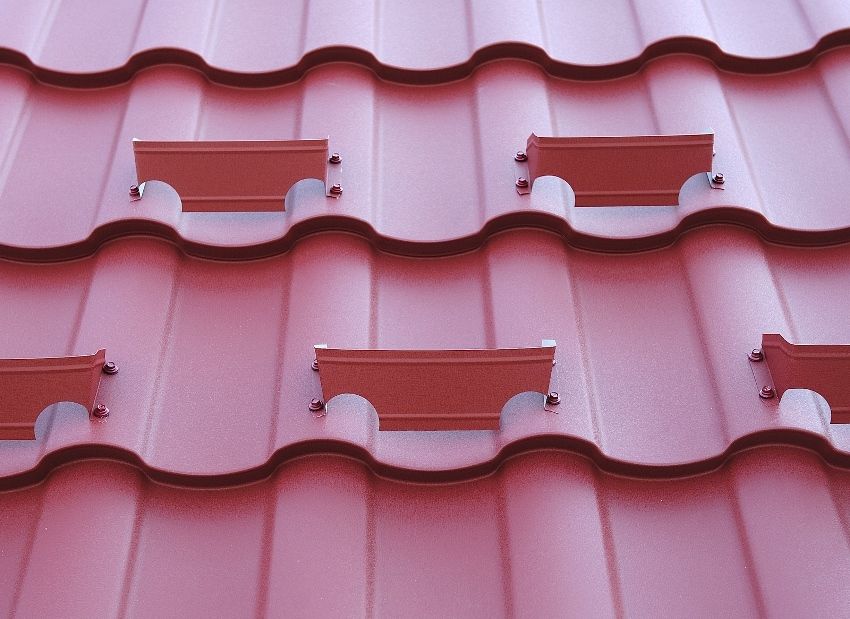
Specificity of the yoke – point snow guard for the roof
Point snow catchers are called yoke or hooks. They are not designed to hold a large amount of snow, so they are used as an addition to tubular and lattice structures. Installation on the roof with a soft coating, which has a small slope.
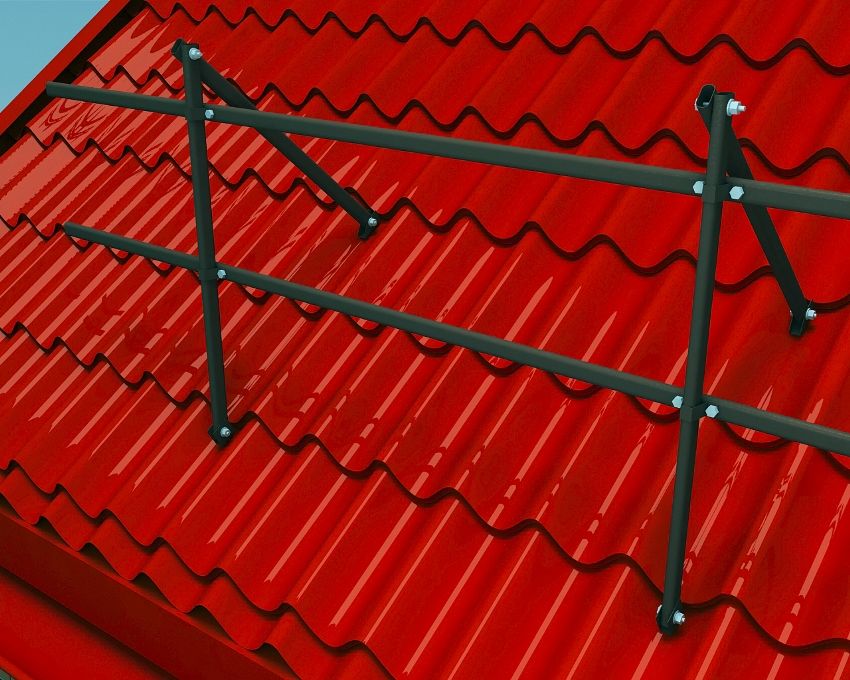
Supports for self-made designs, as well as for factory-made snow fixers, can be purchased at a hardware store. Using these simple devices, you can avoid many problems associated with the avalanche-like descent of snow from the roof.
